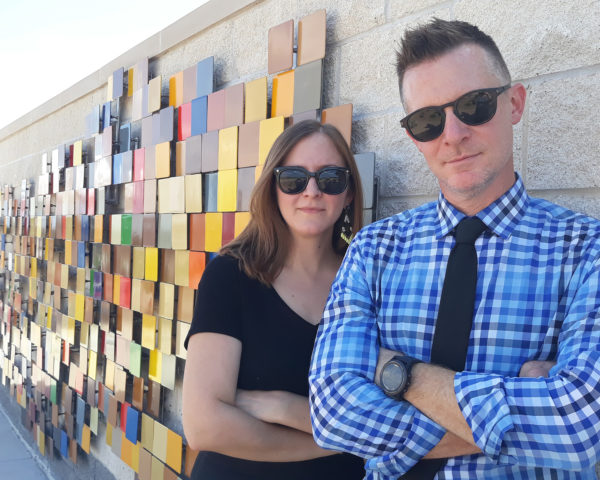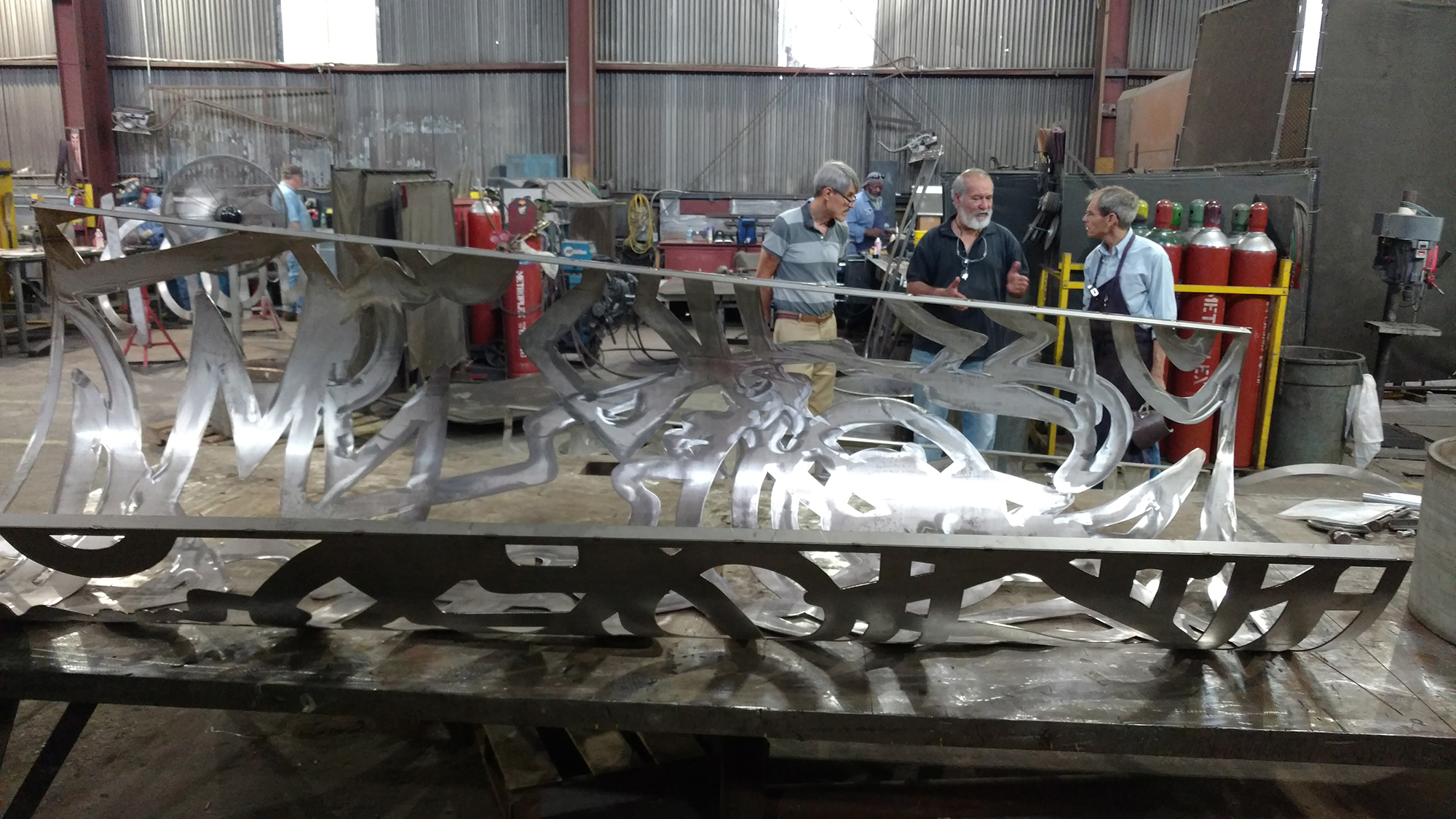As an emerging public artist, you may not have direct experience, but you absolutely have artistic ability. I have facilitated numerous emerging public artist selection panels which are most often based on previous work, credentials, and interviews. It is important that every artist share not only their overall aesthetic but how their concepts and ideas are developed. Don’t feel limited by the medium or scale you typically work within – given the proper funding and support, an artist can stretch in many new directions! A painting whether representational, abstract, or non-representational still considers how to build in space, just on a two-dimensional plane. I would also encourage applicants to consider what their artistic route has been, whether traditional or not. For example, I completed one year of architecture school before earning a degree in art. Five years later, I started to consider not just the space within my large-format drawings but the architectural space around it and suddenly I was an installation artist. These individual experiences matter and you should share them because the panel’s choice for who will serve a community best is based on a well-rounded understanding of the artist.

I feel the strongest public art projects are those that maintain the artist’s aesthetic while capturing the essence of what the community hoped for the project. Talking with the community is the first step in public art. These conversations help any artist not only understand the area and goals in mind but also helps them understand why they were selected for the project. Those involved with a public art project genuinely care about their neighborhoods and often volunteer their time for many community-bettering initiatives. It is the responsibility of the artist to give this same level of care back, in listening and in design. Every public art project also goes through several design reviews, primarily looking at the artistic concept proposed for the site. These reviews include community members, City staff, the Fort Worth Art Commission, and others, all of whom are present to provide helpful feedback for the success of the artwork. In these meetings, it’s important to stay open to logistic or design feedback and remember sometimes the first iteration is just that. Once back to the studio, you can reflect on how to best proceed with comments in mind.
Making something permanent invites a lot of questions. When I first arrived to public art, I was surprised by all the considerations that must be addressed – sharpness, climbable features, openings that small children could stick a finger in, etc. It is very different from the unspoken “do not touch” rule that artists are so familiar with in the gallery setting. The idea of forever may seem daunting, and it certainly was to me as someone who often makes temporary installations, but rest assured that you will not be alone in the effort. While the design is yours, you will likely work with and be advised by experts in various fields to help best realize your ideas: engineers, conservationists, installation teams, and last, but not least, your project manager (more on that later). You could also choose to work with a fabricator – it might feel strange to have someone else “make your work for you,” but it can be helpful for a variety of reasons including medium expertise, availability of equipment, and personal time constraints to name a few. I’ve seen several public art projects become intensely collaborative with artists and fabricators becoming partners in an effort to complete a project. It’s all about finding the right team members who can work with you on a unique project, and within budget.
For artists who are used to working on a shoestring budget, public art funding often looks huge but it may not stretch as much as you’d expect. A very important part of the budget is the 15% artist’s fee which the standard among city programs. This number may sound small if you are used to a 40-50% gallery commission, but keep in mind this is a different kind of project with a different kind of price tag coming from public dollars. What you present at a gallery is not only your individual idea/design but your creation (generally), which is why you get 50% and the gallerist gets 50% for promotion and sale of the work. In a city process, the design is based in part on community input and outside of the artist’s fee, the remaining amount goes entirely to the creation of the design including all those professional services previously mentioned. However, if you fabricate the work yourself, that is considered artist labor and would be paid in addition to the artist fee; creating artwork is specialized work and should be compensated as such. And speaking of budgets, when you go to create your personal budget and set out expectations for earnings within the year remember that your artist fee is spaced out over the duration of the project, which in general takes at least two years to complete. With that in mind, be cautious about what you expect and when because delays in the process are not always something you can control and payments to the artist as a contractor of the city are made based on milestones only.
Long-term projects are unusual for some but, with so many people involved in a single public art project, it will move at a slower pace than your personal studio work. My best advice is to stay eager and to continue to work on what you can to keep engaged with the project such as an artist statement while you wait for services, reviews or other decisions. While timelines are not entirely within your control, if you know that you are going to be working hard on a preliminary design in the spring, don’t also commit to a solo exhibition at the same time in which you envision all new work. On the other hand, if you are selected for a project and notice the timeline conflicts with other commitments be honest about expectations and negotiate contract language for the timeline upfront.
Outside of managing a project timeline and watching over budgets, your project manager is your greatest advocate. Before you even meet them, public art administrators are introducing new artists and new ideas or mediums to communities. Administrators often attend non-project meetings to bring art and the program to a wider audience. Use the project manager partnership to your advantage and keep them informed! Send your project manager updates periodically (don’t wait until its “perfect”) or invite them to your studio; it will undoubtedly better the project. And above all, respect their position as a person who has likely done considerable work on the administrative end to make projects like yours possible. By the time you are celebrating your completed project, you will likely have a new friend.
Michelle Richardson has served as a Public Art Project Manager with Arts Fort Worth since 2017.


